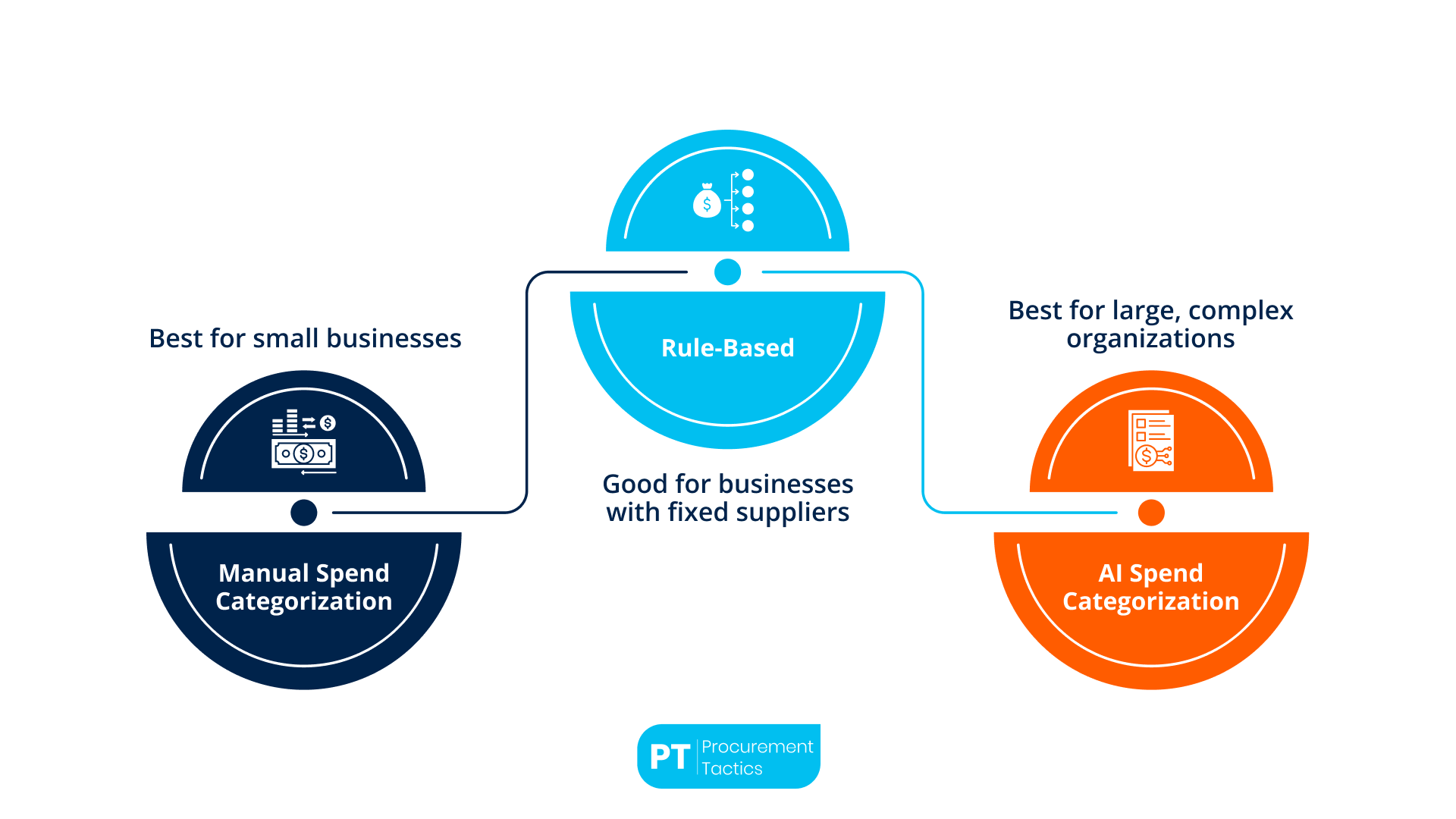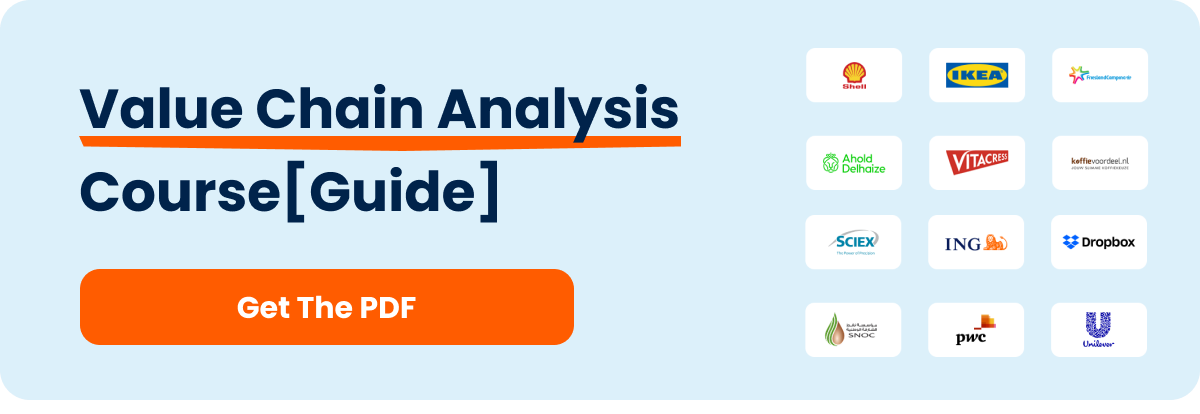Written by Marijn Overvest | Reviewed by Sjoerd Goedhart | Fact Checked by Ruud Emonds | Our editorial policy
Spend Taxonomy — How To Categorize Your Spend
What is spend taxonomy?
- A spend taxonomy is a system where business spending is grouped from general to specific expenses.
- A spend taxonomy is important to track the spending of procurement teams which will allow them to make more informed decisions.
- Procurement teams usually start with broad categories like office supplies, IT equipment, professional services, and travel, and then drill down to more detailed subcategories.
What is Spend Taxonomy?
A spend taxonomy is a system where business spending is grouped from general to specific expenses. The taxonomy is important for procurement teams to track their spending and make more informed decisions.
For example, procurement teams can start with broad categories like office supplies, IT equipment, professional services, and travel, and then drill down to more detailed subcategories.
Office supplies could include stationery, furniture, and cleaning materials. IT equipment might encompass computers, software, and networking gear. Professional services could cover legal, consulting, and marketing services. Travel could be divided into air travel, accommodation, and meals.
Once your taxonomy structure is in place, the next step is to categorize your actual spending. For example, purchasing 50 packs of printer paper for $500 would fall under office supplies, specifically stationery.
Purchasing 10 laptops for $15,000 would be classified as IT equipment and computers. A $5,000 payment for legal consultation would be classified as professional services or legal services. Similarly, a $2,000 payment for flight tickets to attend a business meeting would be classified as travel and entertainment, air travel.
This clarity helps in several ways. For instance, you may realize that a big portion of your budget is for IT equipment. This will allow you to get better deals from your suppliers to save some cash. It helps with budgeting as well since you understand how much you spend in each area, and you will be planning better for the future.
MECE in Spend Taxonomy
MECE is a term that translates to Mutually Exclusive, Collectively Exhaustive; it is mostly used as an organizing principle. This ensures your spend taxonomy avoids overlap and doesn’t leave a gap in data. Now, let’s continue to explain the two aspects of MECE:
1. Mutually Exclusive (ME)
Mutually Exclusive means that every single item belongs only in one exact box, but it never overlaps into other boxes. For example, an orange would be in only one specific orange box and the grapes could be put into a particular box with only grapes, but none of those fruits can stay simultaneously in both.
2. Collectively Exhaustive (CE)
Collectively Exhaustive means you have enough boxes for all of your items. Thus, in an example case like oranges, grapes, and watermelons, each fruit gets its own box, and consequently, every single fruit has a place to go with nothing being wasted or left out.
The most important advantage is that if you sort your items in a MECE way, similar to the examples above, then you’re making sure each fruit fits into one box and you have enough boxes to cover all types of fruits that you have. This structure makes finding and knowing everything easy and clear.
Three Ways to Categorize Spend

1. Manual Spend Categorization
Manual spend categorization involves the usage of spreadsheets, or any basic software alike, to manually organize your expenses into categories like materials, services, or technology.
Using this way of categorizing your spend allows you to track cash flow and ensure compliance. However, you must know that this is prone to errors and is time-consuming, which can slow your decision-making process.
2. Rule-Based
This spend categorization automates expenses by sorting them using predefined rules based on supplier names, invoice details, or amounts spent.
By doing this, it reduces the chances of errors, ensures consistent categorization, and provides real-time updates.
Thus, helping procurement professionals to make decisions quickly and comply with standards in place in procurement.
3. AI Spend Categorization
This spend categorization uses machine learning technology to automatically classify expenses accurately. By learning from historical data, AI can identify patterns, detect anomalies, and handle nuanced distinctions between similar products or services from the same supplier.
AI spend categorization processes large datasets quickly and integrates smoothly with financial systems, enabling better planning and decision-making.
However, implementing AI requires significant investment in technology, skilled personnel, and high-quality data to ensure success.
You may ask which one is the best way of spend categorization for your business.
My advice is that if you have a small business with straightforward operations and limited suppliers, manual categorization may be enough for your process.
Rule-based systems, on the other hand, are a practical choice for organizations with predefined products or services from their suppliers.
Furthermore, AI-based categorization excels in large organizations operating in dynamic industries with complex procurement needs and extensive supplier networks.
Its ability to manage vast datasets across multiple locations and ERP systems makes it ideal for scaling and optimizing procurement operations.
Conclusion
Businesses have many expenses, and failing to monitor how you spend can disrupt your entire process. That’s why implementing a well-structured spend taxonomy is vital for achieving financial clarity and efficiency.
By applying the MECE principle, you create a system that provides a clear and accurate view of your financial data. This approach ensures that all your expenses are categorized properly, giving you a comprehensive understanding of your spending.
Furthermore, having a spending taxonomy can help you identify key spending areas, make better decisions, and plan more effectively for the future. Whether you use manual, rule-based, or AI-driven categorization, choosing the method that fits your needs will ensure your processes remain organized and your financial goals are within reach.
If you want to learn more about categorizing expenses and analyzing your spend, our Spend Analysis Course is perfect for you! This course offers a comprehensive overview and practical strategies to help you effectively manage your spending and optimize your financial processes.
Frequentlyasked questions
What is a spend taxonomy?
A spend taxonomy is a system where business spending is grouped from general to specific expenses. For example, procurement teams will start with broad categories and then drill down to more detailed subcategories.
Why is spend taxonomy important?
Spend taxonomy is an important tool for procurement teams to know their expenses and make well-informed decisions. It also supports better budgeting and supplier negotiations.
What is the MECE principle in spend taxonomy?
MECE stands for Mutually Exclusive, Collectively Exhaustive. The MECE principle ensures that there is no overlap between categories (Mutually Exclusive) and that all expenses are accounted for (Collectively Exhaustive).
About the author
My name is Marijn Overvest, I’m the founder of Procurement Tactics. I have a deep passion for procurement, and I’ve upskilled over 200 procurement teams from all over the world. When I’m not working, I love running and cycling.








